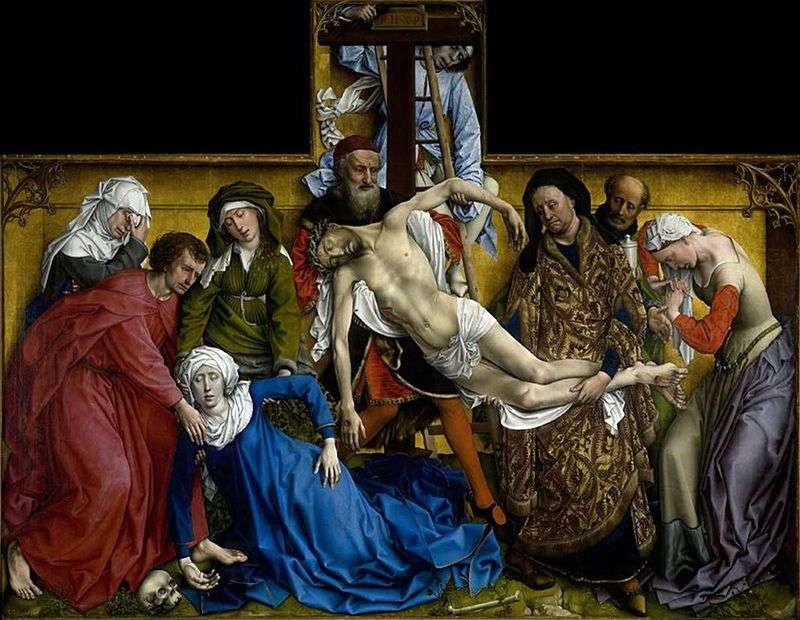
“Removal from the Crest” – one of the most famous works of Rogier van der Weyden. She had a great influence on the development of Dutch painting. The artist appeared imitators, many copies were made from this picture. The Crest was ordered by the crossbowman guild artist, but when Maria Hungarian, the sister of Emperor Charles V and ruler of the Netherlands, saw the piece, she bought the piece, and in return, the artist Michael Cox wrote an excellent copy for the guild. Later, the original came into the possession of her nephew, King Philip II, who placed him in the fortress of the Escorial monastery, near Madrid.
In the inventory records of the Madrid Royal Court Escorial from 1575, where the work of “Unsubscribing” was kept at that time, it is mentioned that it had side flaps that have not survived to our time. They depicted four evangelists and the Ascension of Christ. The picture refers to the early period of the artist. Depicted is the moment when the Savior’s body is removed from the cross. He is held by Joseph of Arimathea, on the left, and Saint Nicodemus, on the Right. Fainted Mother of God Supports St. John, behind whom stand Maria Kleopova and Maria, the sister of Lazarus. At the right edge of the picture is Mary Magdalene, bent over in crying, and behind her is a man with a vessel with incense.
The color contrasts of the picture support the emotional tension of her tragic plot: the bright blue dress of the fainted Virgin Mary, and the scarlet clothes of St. John, the green dress of Maria Kleopova. The brocaded robe of St. Nicodemus contrasts with its pattern with the dress of Mary Magdalene, decided by the artist in delicate color relationships. Great attention is paid to the image of faces and hands. Madonna’s deathly white face is full of deadly agony. Her thin lifeless hands stand out against the blue dress, increasing emotional stress. The faces of St. John and Maria Kleopova are full of thoughts and deep compassion.
The whole figure of Mary Magdalene with unnaturally broken arms and head bowed is the very embodiment of grief. Those who support Christ Joseph of Arimathea and St. Nicodemus are full of sorrow. With infinite care details of clothes are written out, their folds, like the figures themselves, have almost a sculptural structure. In the picture there is actually only the foreground, and the characters look like a sculpted frieze; Perhaps – this is a consequence of the fact that van der Weyden began his creative work as a sculptor. Removing from xpecma Rogier van der Weyden is one of the most outstanding works of Dutch painting of the XV century and, of course, the pearl of the picturesque Prado collection.
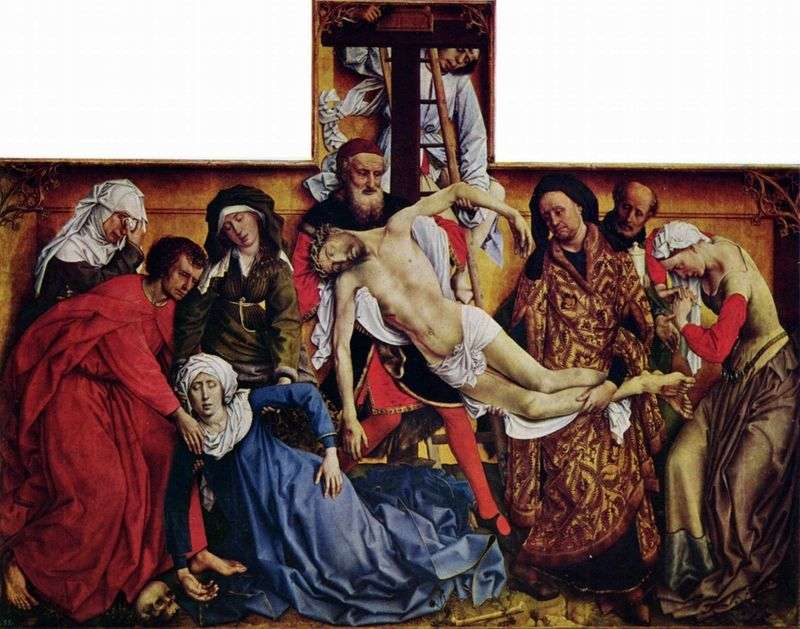 The removal from the cross by Rogier van der Weyden
The removal from the cross by Rogier van der Weyden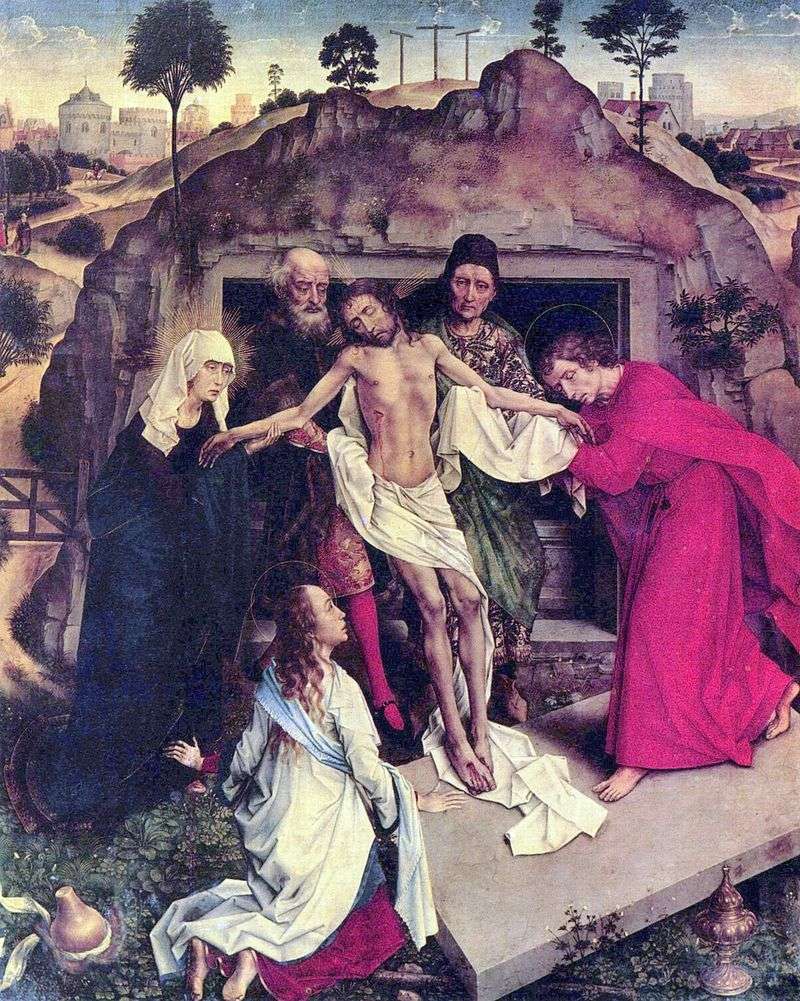 The situation in the grave by Rogier van der Weyden
The situation in the grave by Rogier van der Weyden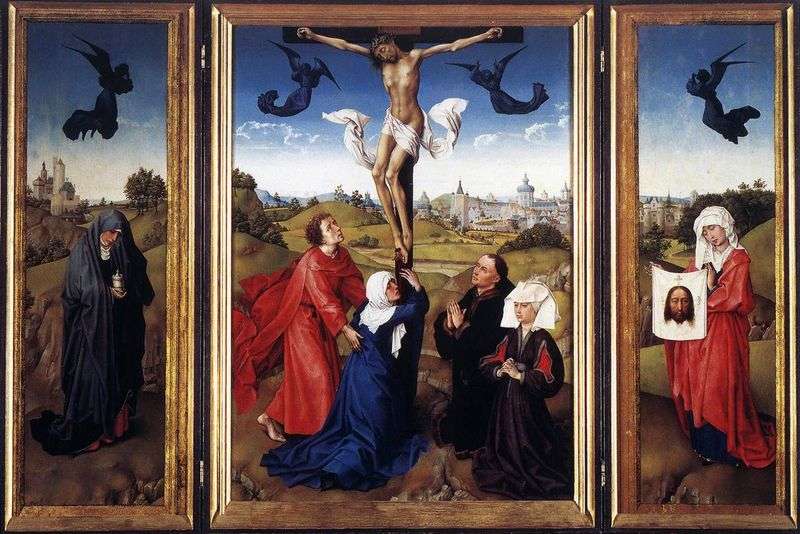 Triptych “Crucifixion” by Rogier van der Weyden
Triptych “Crucifixion” by Rogier van der Weyden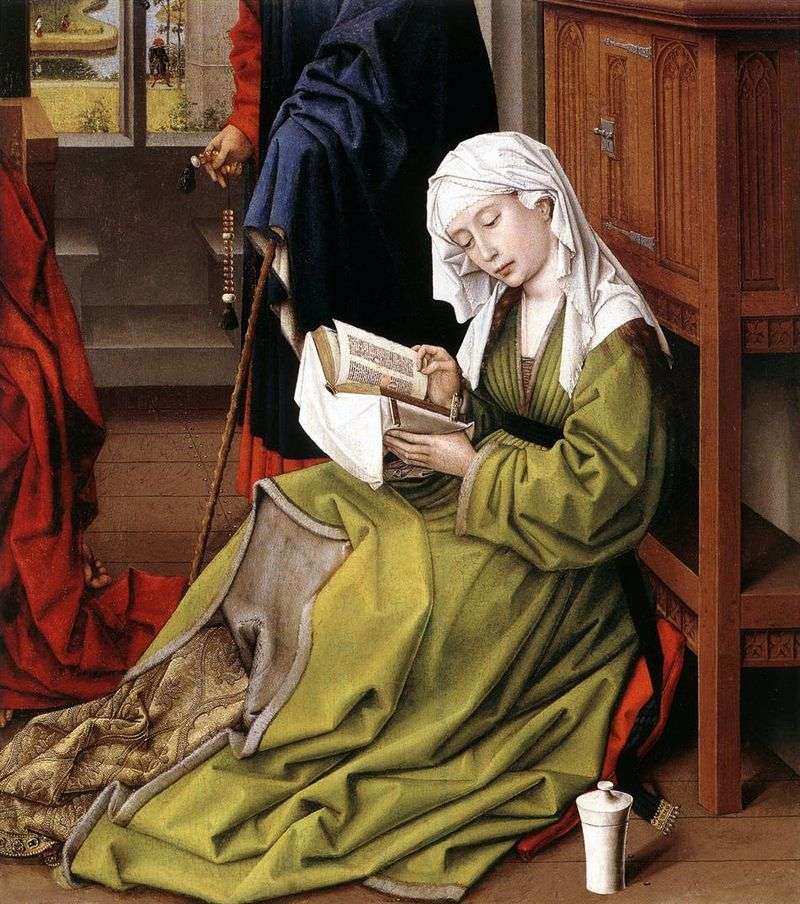 Read Mary Magdalene by Rogier van der Weyden
Read Mary Magdalene by Rogier van der Weyden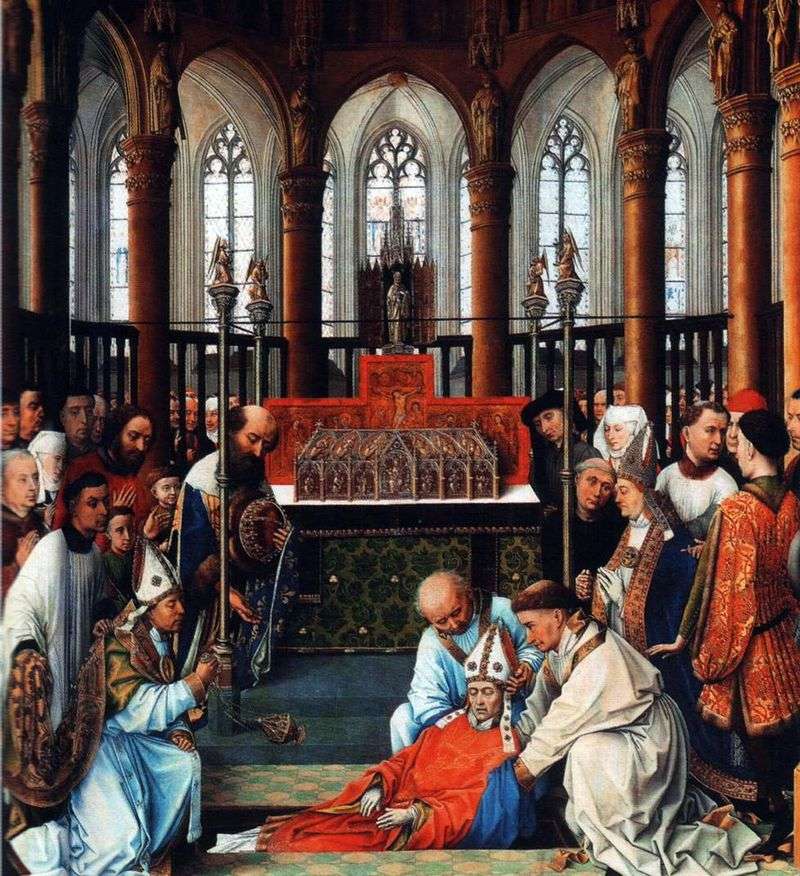 Discovering the Relics of St. Hubert by Rogier van der Weyden
Discovering the Relics of St. Hubert by Rogier van der Weyden Triptych of Marriage by Rogier van der Weyden
Triptych of Marriage by Rogier van der Weyden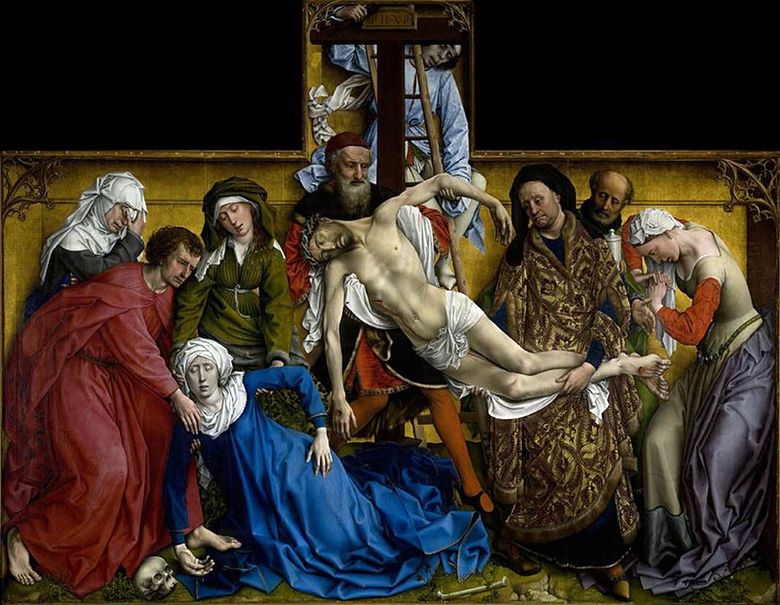 Retrait – Rogier van der Weyden
Retrait – Rogier van der Weyden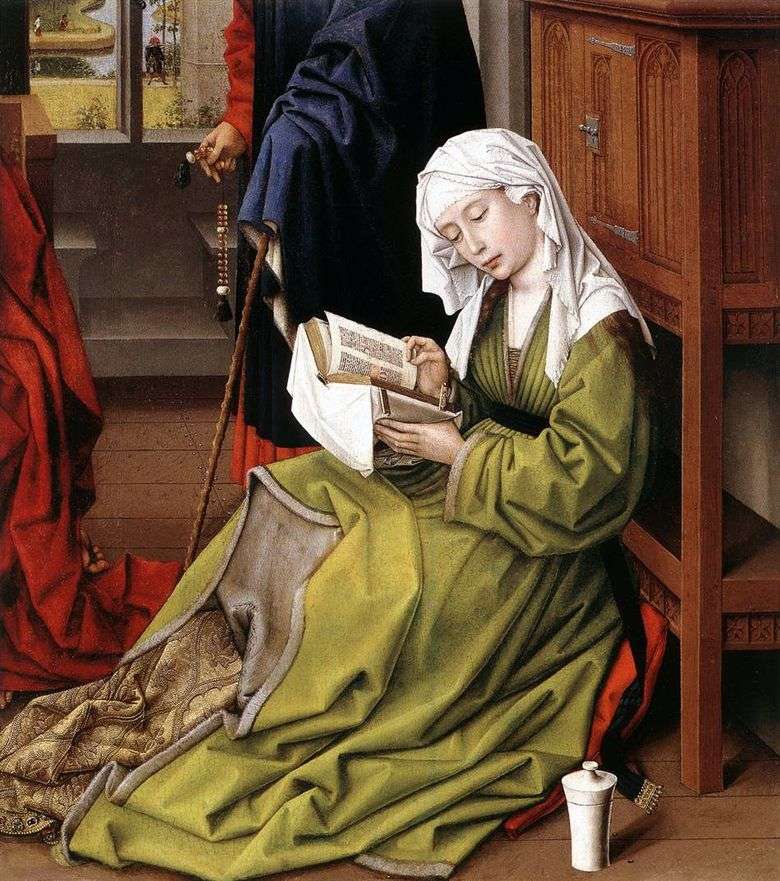 Leyendo María Magdalena – Rogier van der Weyden
Leyendo María Magdalena – Rogier van der Weyden